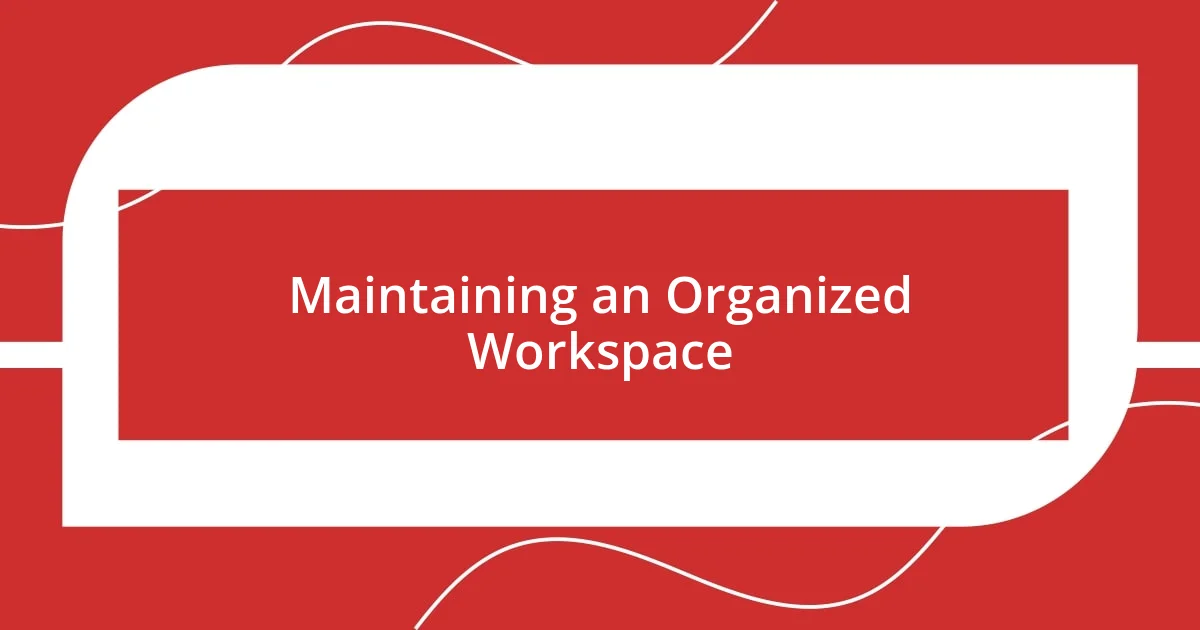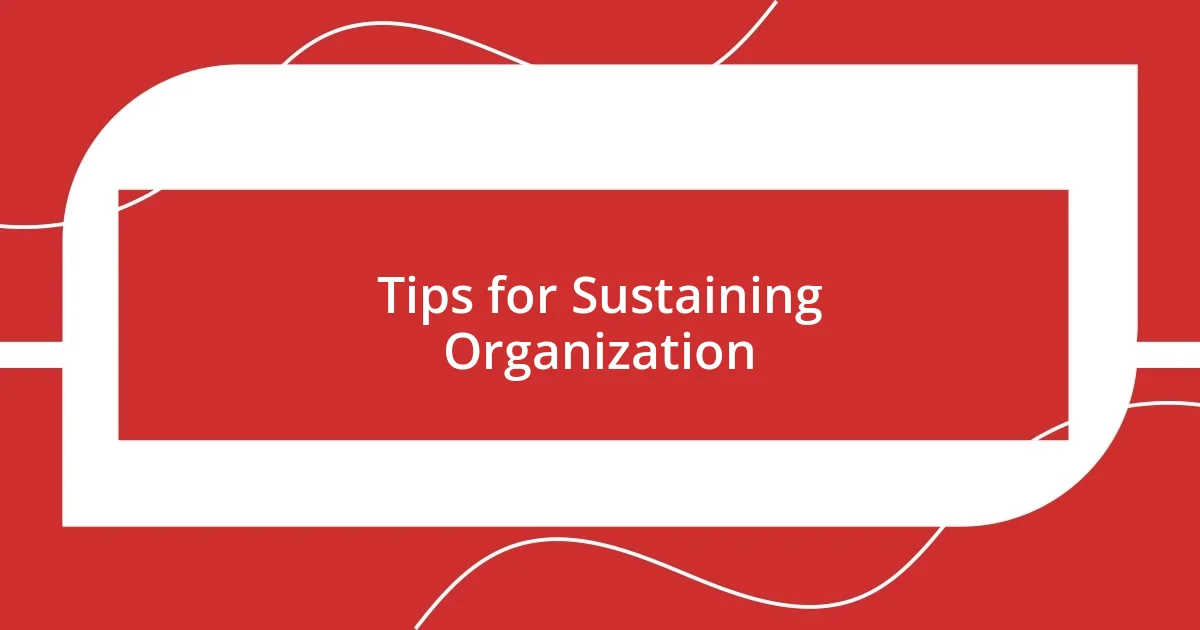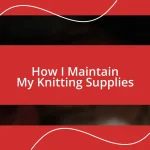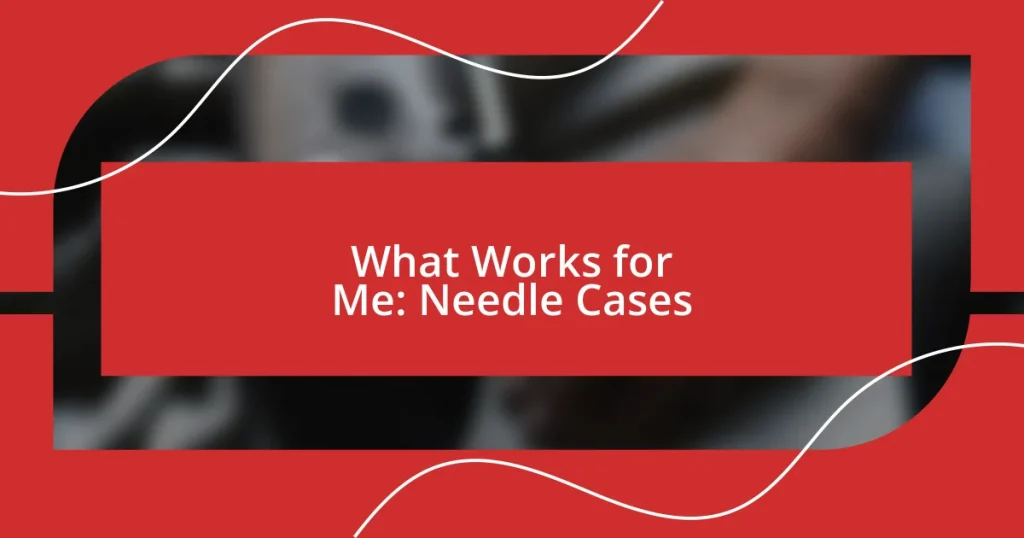Key takeaways:
- Project bags enhance organization, clarity, and creative flow by categorizing and containing specific projects.
- Choosing the right project bag involves considering size, material, pockets, closure type, and personal design preferences for optimal function.
- Maintaining an organized workspace requires regular tidying, designated activity zones, and developing sustainable habits for long-term creativity.

Understanding Project Bags Benefits
Project bags are a game-changer for anyone looking to stay organized. Personally, I remember feeling overwhelmed by the chaos of my crafting supplies scattered everywhere until I discovered project bags. Now, each bag holds a specific project, which not only keeps materials contained but also makes it easy to grab what I need when inspiration strikes.
One of the most rewarding aspects of using project bags is the clarity they provide. Have you ever felt lost with multiple projects on the go? I certainly have. Now, when I glance at my neatly labeled bags, I feel a sense of control and focus. The simplicity of having everything in one place reduces anxiety and allows me to dive right into my creative flow without unnecessary distractions.
Additionally, project bags add a layer of excitement to my crafting routine. I often find myself choosing a bag based on my mood, wondering, “What do I want to create today?” This emotional connection turns crafting into a more dynamic experience. Whether it’s a cozy knitting project or a vibrant sewing endeavor, my project bags invite me to explore and express my creativity in delightful ways.

Choosing the Right Project Bag
When it comes to selecting the ideal project bag, I always consider both functionality and flair. I remember when I first chose a bag that looked great, but it lacked adequate pockets and structure. My yarn would tangle, my scissors would get lost, and I ended up frustrated on more than one occasion. Now, I look for bags that offer not just a pretty exterior but also smart organization features—like compartments to keep smaller tools separate and easily accessible.
Here’s what I typically keep in mind while shopping for the perfect project bag:
- Size: Make sure it fits your current project comfortably.
- Material: A sturdy, lightweight fabric that can withstand wear and tear is ideal.
- Pockets: Look for internal and external pockets for better organization.
- Closure Type: Zippers or magnetic snaps help keep everything secure.
- Design: Select a style that reflects your personality and brings you joy.
By focusing on these elements, I find that my crafting experience becomes more enjoyable and less chaotic, allowing me to truly immerse myself in my creative pursuits.

Categorizing Your Crafting Projects
Organizing your crafting projects by category can truly elevate your creative experience. I remember when I first started categorizing. I separated my knitting, embroidery, and scrapbooking projects into distinct bags. Instantly, it felt as if I had found a secret weapon against crafting chaos. Each category of project now had a dedicated space, making it easier to switch gears depending on my mood. Plus, I realized that having a designated bag for each type not only streamlined my workflow but also heightened my excitement. When pulling out a particularly colorful sewing project bag, I couldn’t help but feel a rush of inspiration.
I often utilize a color-coded system for my project bags, which adds an extra layer of fun and organization. Just imagine opening a vibrant blue bag and knowing it’s for a beach-themed knit along. It sparks joy and creativity. I even started to label the bags with little tags that explain not just the project, but also the intention behind it. For example, a bag labeled “cozy evenings” holds my woven throw project, reminding me of the warmth I’m creating for chilly nights. These little insights help me connect emotionally with my projects, making crafting feel even more personal.
When it comes to categorizing, I’ve learned that organization goes beyond mere convenience; it’s a marker of my creative journey. I often categorize based on project completion stages too. Some bags hold projects that are ready to be finished, while others contain new ideas waiting to be developed. This gives me a sense of purpose. Every time I complete a project, there’s satisfaction in seeing the “finished” space grow. Balancing between current, concluded, and future projects keeps my crafting passion alive and thriving, making each crafting session a delightful surprise.
| Category | Example Project |
|---|---|
| Knitting | Colorful scarf |
| Sewing | Patchwork quilt |
| Scrapbooking | Family vacation album |
| Embroidery | Floral hoop art |
| Future Ideas | Holiday ornaments |

Organizing Tools and Supplies
When it comes to organizing tools and supplies, I can’t emphasize enough the difference that storage containers make. I remember when I had a jumbled mess of knitting needles and crochet hooks that felt like a treasure hunt every time I wanted to start a new project. Now, I use clear plastic containers to keep everything sorted by size and type. It’s like I’ve gained instant access to my own crafting toolbox! Seeing my supplies neatly displayed not only boosts my efficiency but also sparks a little joy each time I open a container.
I’ve also found that investing in a good rolling cart can transform your workspace. In my own experience, I placed a small cart beside my crafting chair, and it changed the game entirely. One level holds my essential tools like scissors and stitch markers, while another holds a collection of yarn in cheerful colors. The convenience of rolling it around means I can tackle projects from different spots in my home. Being able to grab supplies without getting up is a small luxury that I truly appreciate during long crafting sessions.
Lastly, keeping a dedicated notebook for project ideas has proven invaluable. Whenever an idea strikes, I jot it down right away. I’ve lost too many brilliant concepts to the busy haze of daily life, but now, there’s something satisfying about flipping through my notebook and discovering forgotten gems. It’s like having a treasure chest of inspiration ready whenever I need a creative boost. Does anyone else get excited by the thought of revisiting old ideas? I find that my crafting flow is constantly enriched by these little bursts of creativity, reminding me that organization isn’t just about structure; it’s about nurturing my artistic spirit.

Strategies for Efficient Packing
Establishing an efficient packing routine can truly revolutionize how we approach our crafting projects. I’ve found that using packing cubes within my project bags helps to keep everything neatly grouped. Not only does this clear up space, but it also allows me to quickly find patterns and supplies without having to dig through a chaotic pile. Have you ever experienced that moment of frustration when you just can’t find that one piece you need? Trust me, investing in packing cubes pays off when it comes to seamless crafting.
When packing for a specific project, I like to pretend I’m preparing for a mini adventure. I lay everything out on a large table and carefully select what I might need, almost like I’m packing for a trip. Visualizing my crafting time as an adventure injects excitement into the process. For instance, I’ll often pack a small bag with extra supplies for when inspiration strikes unexpectedly. It’s like having a little treasure chest ready for those spontaneous moments of creativity!
In my experience, packing efficiently also means being mindful of the types of tools I take based on the location. If I’m heading to a friend’s house, I only grab the essentials. Leaving behind bulky tools helps create a lightweight bag that’s easy to carry. I remember lugging around every tool imaginable and feeling exhausted before I even started crafting! Learning to pack smart has transformed my crafting outings into enjoyable experiences filled with creativity. Have you tried packing less? It can open up so many new creative possibilities.

Maintaining an Organized Workspace
Maintaining an organized workspace is crucial for fostering creativity and productivity. I’ve discovered that a clean environment really clears my mind. There was a period when I let my crafting area become cluttered with half-finished projects and scattered supplies. I can’t stress enough how draining it was to sit down and feel overwhelmed by the chaos. Once I dedicated time to sorting and tidying, I instantly felt a weight lifted – it was liberating!
Creating designated zones for different activities has also made a world of difference. For example, I have a specific spot for cutting fabric, a separate area for assembling projects, and another for inspiration boards. Each zone feels like a mini workshop, and moving between them adds a sense of purpose to my crafting sessions. Have you ever worked in a place that just “felt right”? I can’t tell you how motivating it is to step into my organized space, knowing I’ve set everything up for success.
In my experience, regularly reassessing your workspace is key to maintaining that organized feeling. I like to take a moment each week to declutter and rearrange if needed. Sometimes, a simple change like moving my tools closer to my workspace can make a huge difference in how smoothly I can get started. It’s like giving my creative process a little refresh. How often do you find yourself needing that boost? Small adjustments can keep the inspiration flowing and help dodge that dreaded feeling of stagnation.

Tips for Sustaining Organization
Sustaining organization is not just about packing and arranging; it’s about creating habits that stick. One effective strategy I’ve adopted is setting aside a few moments at the end of each crafting session to tidy up my area. It might feel tedious, but trust me, that little effort can save you from facing a mountain of chaos the next time you begin. Ever had that jarring moment when you sit down, and the mess hits you like a cold wave? That’s a feeling I’ve learned to avoid by simply taking a few minutes to put things back in their place.
Additionally, I find value in labeling my project bags. I use colorful tags or washi tape to indicate what each bag contains, making it easier to grab exactly what I need without sifting through options. This simple act has transformed my approach to projects—when I see a well-labeled bag, it sparks immediate excitement for what’s inside. Have you ever opened a bag and felt a wave of inspiration wash over you from just the sight of organized supplies? It’s like unveiling a little surprise with each project.
Moreover, incorporating a “project pause” is another insight I’ve discovered. I make it a point to regularly review the projects on my list and assess my progress. Taking a moment to reflect helps me to stay connected with each project’s purpose and reignites my enthusiasm. Have you ever felt lost in a project and wished for a reset? That pause has been my saving grace, aligning my focus and keeping my creative juices flowing. It’s a small yet powerful practice that helps sustain my organizational efforts over time.















